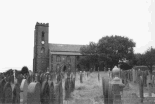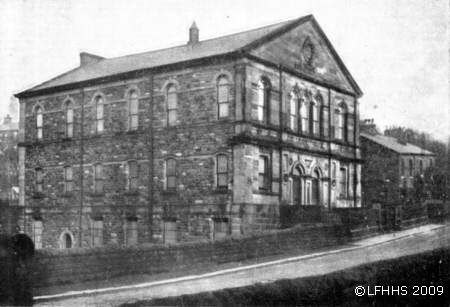
Bridge Street, Waterfoot
Bethesda can claim to be unique in the annals of United Methodism in so far as the membership came about because of a split resulting from a decision by the Wesleyan Conference, who decreed that the practice of teaching writing in Sunday Schools was a breach of the Fourth Commandment and that only religious scriptures should be taught. This caused heated controversy in the Wesleyan Society at Newchurch and a majority of the teachers, scholars and trustees decided that writing should continue to be taught. Eventually these dissenters were cut off from the membership and compelled to found a new church. Of all the causes which resulted in demands for reform in Wesleyan Methodism (and there were many) it is the only time this particular cause resulted in a separation.
The new society tenanted three buildings successively as the membership continued to grow a pace and this growth lead to the bold if rash decision to build a large chapel with a seating capacity of eight hundred seats at Bridge Street, Mill End. The new structure proved more costly than anticipated and when the chapel opened in 1878 Bethesda had the unenviable position of having the largest debt in the Methodist Connexion, with interest and annual expenditure running at £400 per year. Five years after its opening the debt had risen to £6,168. It was not until 1883, with the appointment of the Rev. J. Twigg Taylor that the debt started to reduce and it was not until 1907 that the debt reached the manageable figure of £350.
By the mid nineteen fifties the church was again struggling financially due to high maintenance costs and the small number attending regularly. The last service was held on 31st March 1957 and although the building was used for business purposes for a few years after the closure it was eventually demolished in November 1962.
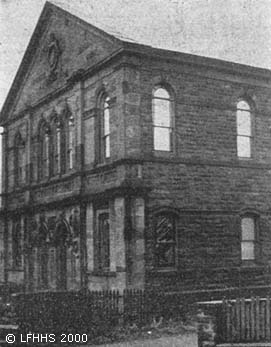
Bethesda United Methodist Church
partly demolished in 1962
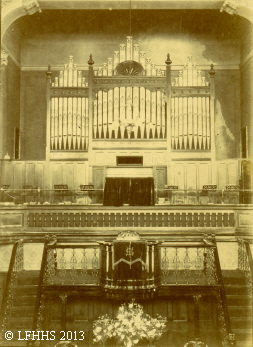
Church interior and Organ
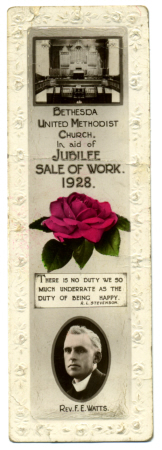
Bookmark produced for the 50th Anniverary in 1928

